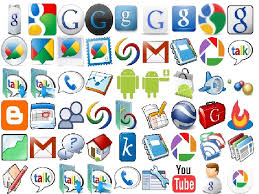The Tech User Experience for Older Adults Needs A Reboot

Is the user experience deteriorating? Tech user experience experts focus on everyone except older adults. But there’s a problem: from AARP’s tech trends survey from 2024 and their 2023 guidance from AARP on inclusive design practices, it’s clear and as the AARP report notes, “No one prefers badly designed, over-complicated products.” Despite preferences, surveys show that today’s user experience for older adults is more problematic than ever. All are confronted with buggy software and frequent bug fix releases, such a problem on iPhones that an embarrassed Apple redirected software work towards fixing. And Google is no better with Pixel phones.
Smartphone and smartwatch adoption highlight UI inconsistencies. Broad older adult adoption of smartphones has inadvertently introduced more, not fewer barriers to achieving digital competence. As the screen size shrank in comparison to PCs, Macs, and iPads, the differences between user interfaces became more obvious. Developers have adjusted features to utilize more icons and fewer words, creating confusion. And the same app on a PC, iPhone and Apple Watch are strikingly different, assuming the app interface is even visible on the watch.
Older adults are pushed online into a standards-free world. The patient portals are now required for access to personal health data and to minimize clipboard use – and has spawned a raft of advice about their creation. However, the lack of standards in creation has resulted in multiple styles and formats for different physician practices (with the clipboard still alive and well). Add the sign-on process that may be difficult on a PC and perhaps impossible on a smartphone. To verify that you are you, an authentication processes require 2 devices to log in – one of which is a phone – cumbersome enough to invite satire in the Wall Street Journal.
Convenience and portability today compete with clarity and usability. There is no turning back the clock – older adults will own smartphones. They need them to function outside the home – and they will learn enough to do those required tasks on whatever apps are required. GPS directions, chat with a grandchild, book a restaurant. You may have observed a couple in which one of them is more proficient and assigned those tasks. But even the proficient will be frustrated by forced change. They will delay the upgrade to a new phone because of the hassle factor. They will wish for a simpler time, when they sat in front of a (relatively) large screen. They used relatively few apps and the login processes were simple and passwords were short and easily reused.
Simpler days are gone for good – what is the fix? Are there innovations on the horizon that will improve the tech user experience? Should there be more user training, obvious and available when a new device is purchased or an upgrade is completed? Should AI software detect when a user is having difficulty and chime in with suggestions? Should improvements be focused on older adults – or is this really a Design for Everyone opportunity? Are tech developers so insulated from users, they don’t see the deterioration of experience as it happened?
[This is the first of blog posts that will drive a new report in 2024 about improving tech user experience for older adults.]







